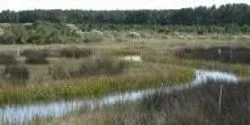Environmental Lab

Virginia Tech faculty engineers and students are unravelling fundamental chemical and health properties of the chemical that contaminated the drinking water for the residents of West Virginia.

Scientists at the University of East Anglia have identified four new man-made gases in the atmosphere – all of which are contributing to the destruction of the ozone layer.

Scientists have known for years that together, bacteria and plants can remediate contaminated sites. Ramakrishna Wusirika, of Michigan Technological University, has determined that how you add bacteria to the mix can make a big difference.

Researchers from North Carolina State University have developed a new technique that uses existing technology to allow researchers and natural resource managers to collect significantly more information on water quality to better inform policy decisions.

Dr. Shane Snyder, EPA Scientists, Leading Environmental Labs to Present Data on Recycled Water, Hydraulic Fracturing, Trace Contaminants in Water.

A site has been designated for a Black Hills State University Underground Campus at the 4,850-level of the Sanford Underground Research Facility in Lead.

University of Adelaide researchers have developed a new web-based tool to help unlock the complex genetics and biological processes behind grapevine development.

With more than 1,600 products using nanotechnology on the market, a team of undergraduate researchers at North Dakota State University (NDSU) is examining how people perceive such products and how these products might ultimately affect the environment.











